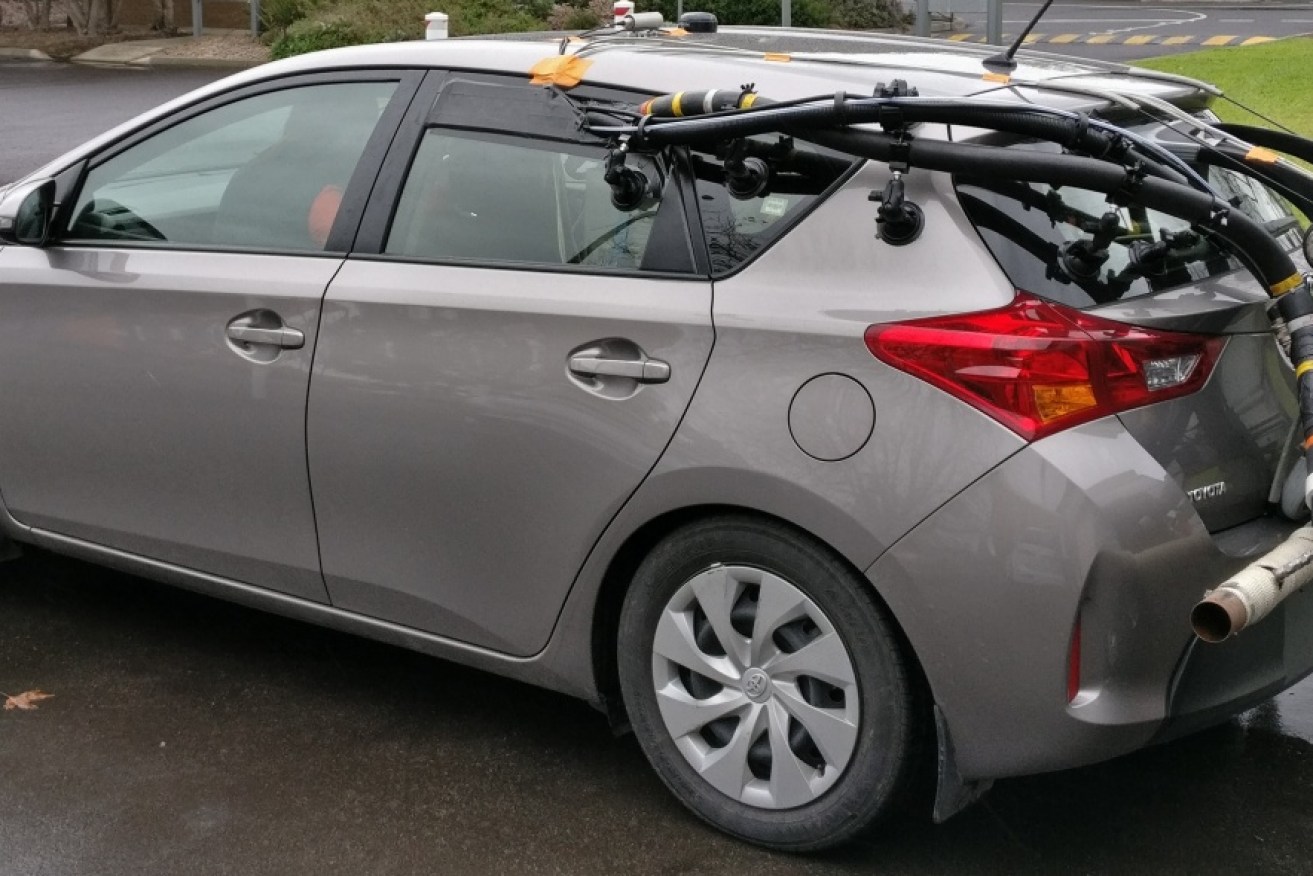Australian cars dirtier, thirstier than makers claim

One of the vehicles tested during the research by Victorian engineering company ABMARC. Photo: Supplied/ABMARC
Research released by the Australian Automobile Association has cast serious doubt on the use of laboratory testing to determine fuel use and greenhouse gas emissions of cars.
The motoring body released the preliminary results, which compared fuel use and exhaust emissions from real-world testing to the claims of car manufacturers.
It found when cars were tested on the road rather than a lab, there were significantly higher greenhouse gas emissions and reduced fuel efficiency.
“We’re seeing an across-the-board difference of about 20 per cent on fuel efficiency,” Australian Automobile Association (AAA) chief executive Michael Bradley said.
“We’re seeing up to 35 per cent difference between what the sticker says and what the car uses — and that’s just for fuel use.
“Probably more worrying is that for noxious emissions, we’ve got cars in our program that are emitting four times the legal limit.”
The AAA is the peak body for motoring groups like the NRMA and RACV.
It commissioned Victorian engineering company ABMARC to test the real-world emissions of 30 vehicles.
While the results released today are preliminary and only contain information for the first 10 cars tested, Mr Bradley said the trend was clear.
“These are all cars that when they were tested in the lab, they were fine,” he said.
“We’re not saying the information being presented is wrong.
“It’s just that clearly there’s a very big difference between what a car does in a laboratory and when you drive it round on the streets of Melbourne.”
‘We should be using real world emissions testing’ here
The AAA has not revealed the makes or models of the cars tested.
Mr Bradley said it appeared that manufacturers were designing cars around meeting the standards, as tested in the lab.
“As vehicle emissions restrictions around the world get tighter and tighter and tighter, what we’re suggesting is vehicle manufacturers implement a range of technologies and strategies to meet all those in a laboratory setting,” he said.
“They build cars that are as clean as they need to be in a lab, but the lab test is a synthetic environment.”

Volkswagen, Audi and Skoda vehicles were implicated in the company’s diesel emissions scandal in 2015. Photo: Getty.
Mr Bradley said the AAA would release the early results to feed into two Government reviews on vehicle emissions: the Ministerial Forum on Vehicle Emissions, and the Australian Competition and Consumer Competition’s (ACCC) new car retailing industry market study.
He said if the Federal Government eventually moved to tighten emissions standards, consumers may have to pay more.
But he promised the efficiency savings would not be passed on to offset the increased cost.
“Proponents of stricter regulations will tell you that the extra cost of vehicles and the extra cost of fuels that might accrue from this, will be brought back to motorists in the form of fuel savings,” he said.
“What our results suggest is that the Government should go down this path with its eyes wide open because the benefits may only be accruing in a laboratory, not in the real world.
“We should be using real world emissions testing in Australia, just like they’re bringing in in Europe, because that’s what consumers deserve.
“We need to know what the real emissions of vehicles are.”
– ABC








